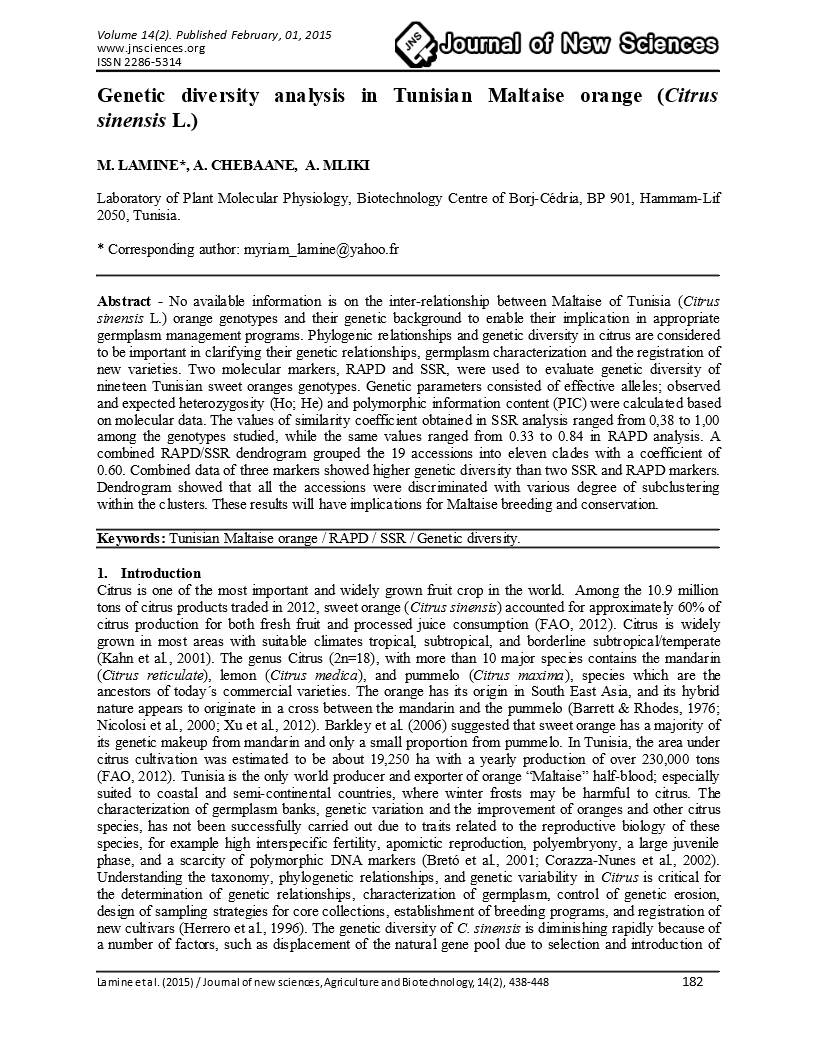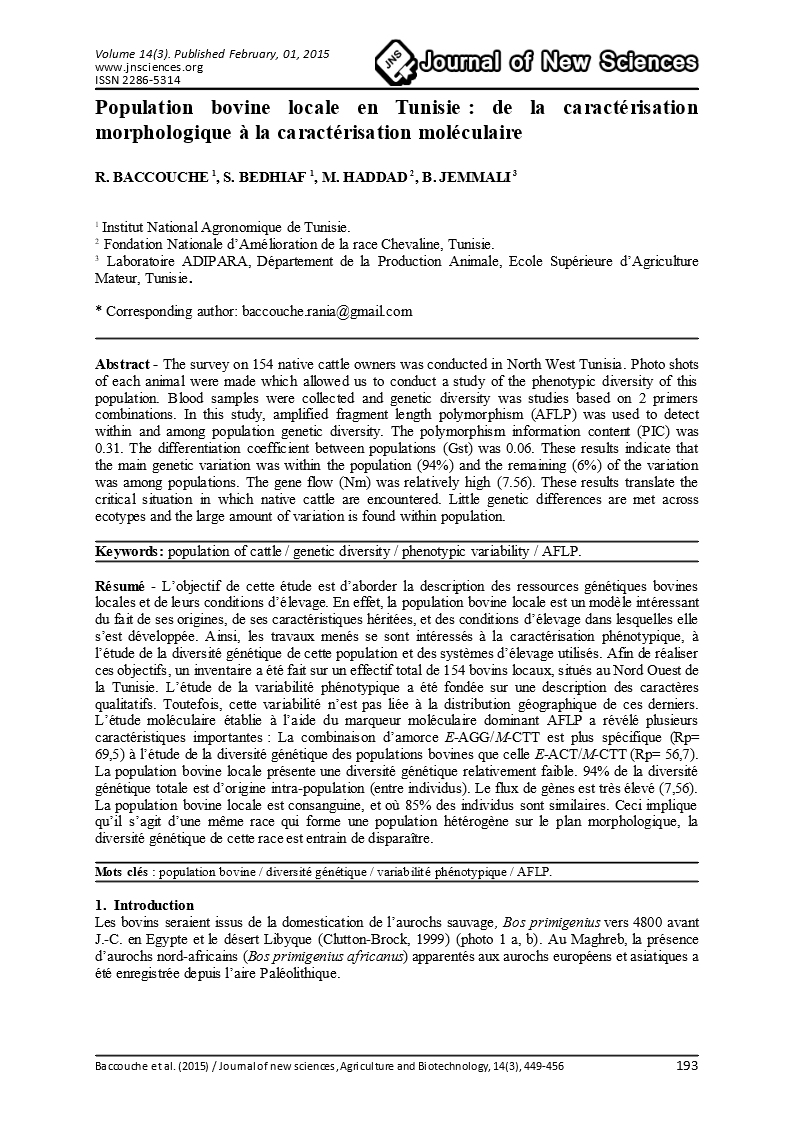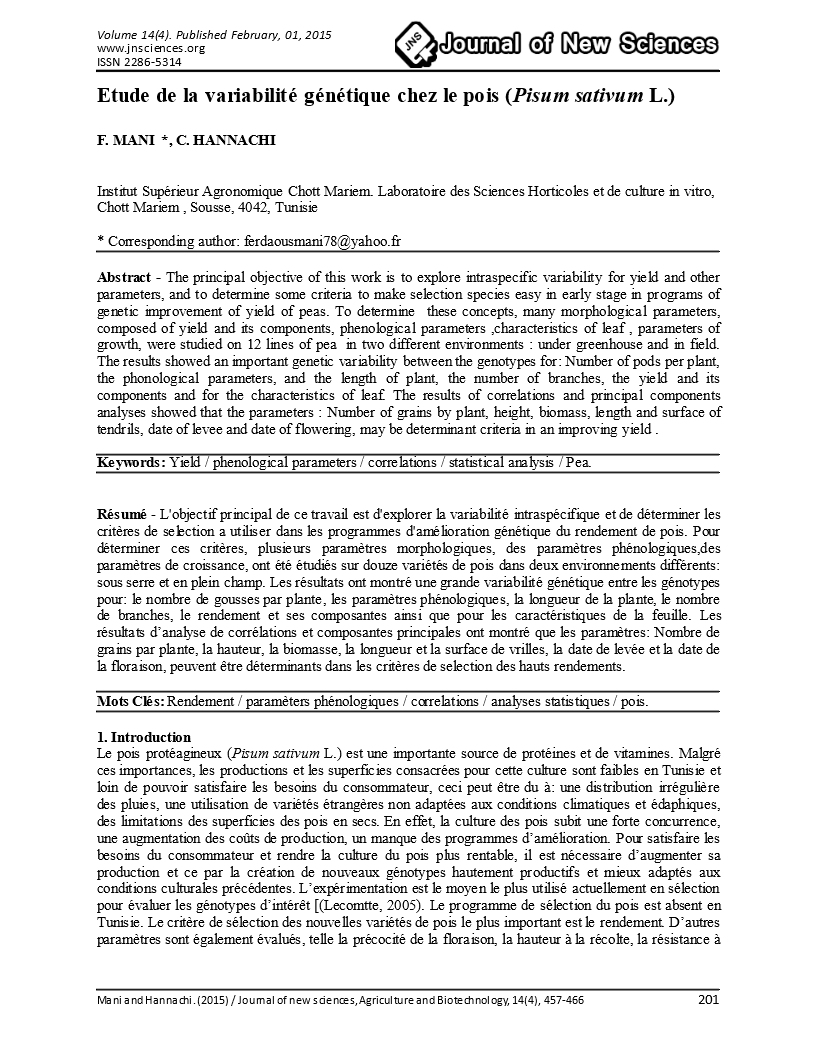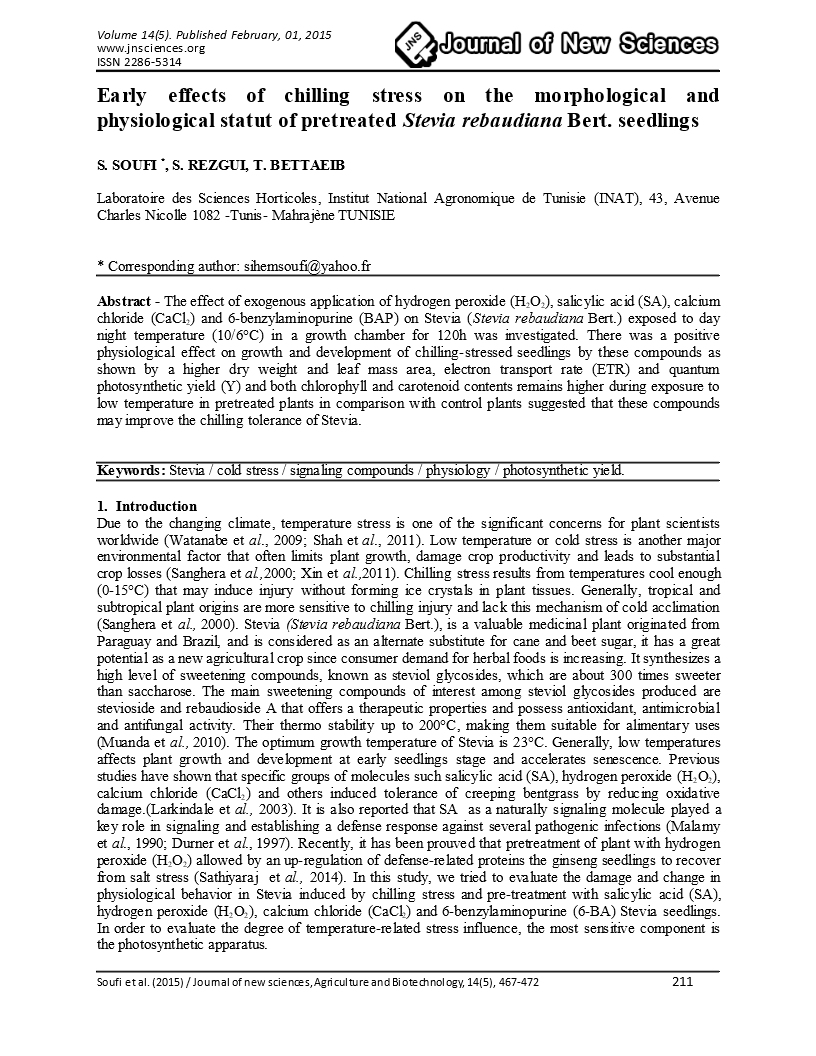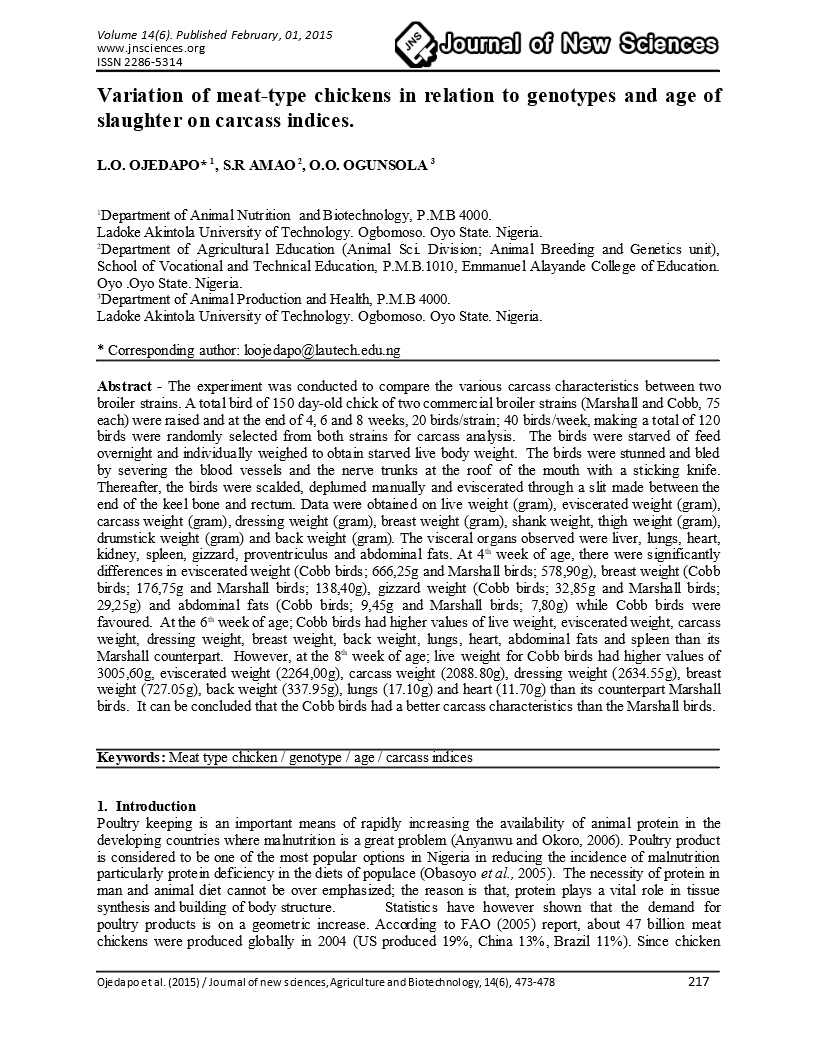- Category: Volume 14
- Hits: 21930
Evaluation of two commercial broiler strains differing in efficiency of feed utilization.
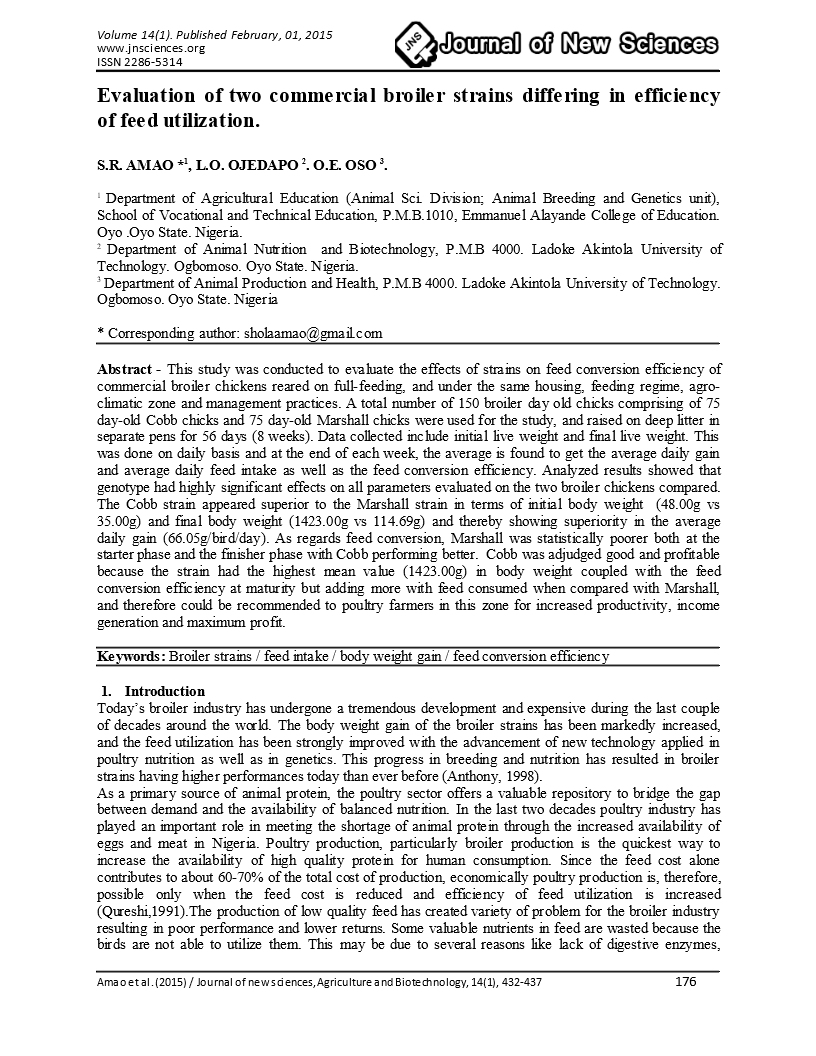
S.R. Amao *1
L.O. Ojedapo 2
O.E. Oso 3
1 Department of Agricultural Education (Animal Sci. Division; Animal Breeding and Genetics unit), School of Vocational and Technical Education, P.M.B.1010, Emmanuel Alayande College of Education. Oyo .Oyo State. Nigeria.
2 Department of Animal Nutrition and Biotechnology, P.M.B 4000. Ladoke Akintola University of Technology. Ogbomoso. Oyo State. Nigeria.
3 Department of Animal Production and Health, P.M.B 4000. Ladoke Akintola University of Technology. Ogbomoso. Oyo State. Nigeria
Abstract - This study was conducted to evaluate the effects of strains on feed conversion efficiency of commercial broiler chickens reared on full-feeding, and under the same housing, feeding regime, agro-climatic zone and management practices. A total number of 150 broiler day old chicks comprising of 75 day-old Cobb chicks and 75 day-old Marshall chicks were used for the study, and raised on deep litter in separate pens for 56 days (8 weeks). Data collected include initial live weight and final live weight. This was done on daily basis and at the end of each week, the average is found to get the average daily gain and average daily feed intake as well as the feed conversion efficiency. Analyzed results showed that genotype had highly significant effects on all parameters evaluated on the two broiler chickens compared. The Cobb strain appeared superior to the Marshall strain in terms of initial body weight (48.00g vs 35.00g) and final body weight (1423.00g vs 114.69g) and thereby showing superiority in the average daily gain (66.05g/bird/day). As regards feed conversion, Marshall was statistically poorer both at the starter phase and the finisher phase with Cobb performing better. Cobb was adjudged good and profitable because the strain had the highest mean value (1423.00g) in body weight coupled with the feed conversion efficiency at maturity but adding more with feed consumed when compared with Marshall, and therefore could be recommended to poultry farmers in this zone for increased productivity, income generation and maximum profit.
Keywords: Broiler strains / feed intake / body weight gain / feed conversion efficiency

